Drawing between Text and Image I
Marco
Hemmerling

Marco Hemmerling is the chair of the panel »Drawing between Text and Image I« on Thursday, 6 June 2024, 5:30–6:30 pm.
Marco is Professor of Computational Design in Architecture at the TH Köln – University of Applied Sciences and Visiting Professor at the Politecnico di Milano, School of Architecture and Urban Planning. Previously he was Professor at the Detmold School of Architecture and Interior Design and Director of the post-graduate Master program Computational Design and Construction at the East-Westphalia University of Applied Sciences. He is an elected member of the Association of German Architects. For the year 2024/25, Marco has been awarded one of the scholarships of the German Academy in Rome at Casa Baldi, considered one of the most important awards for outstanding artists in the fields of visual arts, architecture, literature and music.
akoeln.de
Marco is Professor of Computational Design in Architecture at the TH Köln – University of Applied Sciences and Visiting Professor at the Politecnico di Milano, School of Architecture and Urban Planning. Previously he was Professor at the Detmold School of Architecture and Interior Design and Director of the post-graduate Master program Computational Design and Construction at the East-Westphalia University of Applied Sciences. He is an elected member of the Association of German Architects. For the year 2024/25, Marco has been awarded one of the scholarships of the German Academy in Rome at Casa Baldi, considered one of the most important awards for outstanding artists in the fields of visual arts, architecture, literature and music.
akoeln.de
Peter
Bertram

Peter Bertram is an architect, researcher, and educator employed as an associate professor at the Royal Danish Academy in Copenhagen, Denmark. He is head of the master’s programme Art and Architecture and head of the organizing committee of the artistic research biennial Works+Words in Copenhagen. His main research areas are artistic methodology and architectural typology. He has exhibited his work on many occasions in Denmark and internationally. He has published several books on his work, including »The Makings of an Architectural Model« (2012), »Problem Invention« (2019) and »The Windy House« (2024) in press.
4 Diagrams
The speech presents four definitions of a diagram to discuss different aspects of architectural media. The first diagram is a skeleton-like sketch of elements under consideration. It is a whole consisting of interrelated parts subject to experimentation. It is assumed to operate in a manner similar to another whole of interrelated parts. It is a mental map. The second diagram is a notation. It uses abstract signs and codes to notate information and describes actions and events. It has no visual likeness to an object under consideration. It is well suited to map complex and volatile phenomena and develop strategies to influence a given context. The third diagram is a motif. It is the way elements of an architectural medium are distributed and influence each other. It is not translatable, nor does it resemble an object under consideration. The true function of the motif is to be suggestive. The motif is the possibility of a fact – not the pictorial fact itself. The fourth diagram is the »other half« of the mental map. It is the whole of interrelated parts that the medium relates to. It can for instance be a social diagram.
The speech presents four definitions of a diagram to discuss different aspects of architectural media. The first diagram is a skeleton-like sketch of elements under consideration. It is a whole consisting of interrelated parts subject to experimentation. It is assumed to operate in a manner similar to another whole of interrelated parts. It is a mental map. The second diagram is a notation. It uses abstract signs and codes to notate information and describes actions and events. It has no visual likeness to an object under consideration. It is well suited to map complex and volatile phenomena and develop strategies to influence a given context. The third diagram is a motif. It is the way elements of an architectural medium are distributed and influence each other. It is not translatable, nor does it resemble an object under consideration. The true function of the motif is to be suggestive. The motif is the possibility of a fact – not the pictorial fact itself. The fourth diagram is the »other half« of the mental map. It is the whole of interrelated parts that the medium relates to. It can for instance be a social diagram.
Lukas
Hamilcaro
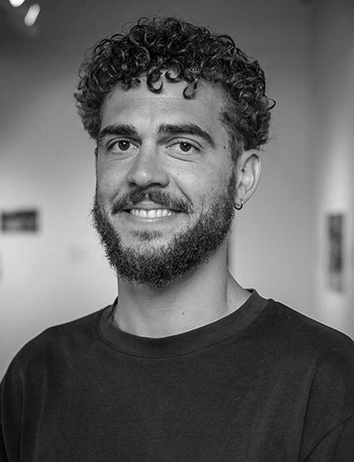
Lukas Hamilcaro (b. 1991) is an architect-illustrator based in Marseille, working in the fields of temporary architecture, urban design, scenography and illustration. He studied architecture at the École nationale supérieure d’architecture Paris Val de Seine and at the Universidad Federal do Rio de Janeiro. He has worked for many years with raumlaborberlin and the ETC collective, pioneers of collaborative architecture. He often works in a participatory approach, and conducts many workshops with different types of public, including students, people with disability, children’s and marginalized communities. For him, architecture and visual art is a way to experiment space with a common-tool that aims to share public imagination.
Instagram
Collective Drawing
What possibilities arise when we understand drawing as a tool for intervention and participation in urban and social contexts? In this experimental workshop participants will experience drawing through the production of spatial and visual-tactile narratives that connect them. Drawing will be considered as a multisensory movement that deals with the embodiment of perception. It links situations with actions. As such, drawing is ideally suited to initiate acts of intervening and producing relations. The participants of the workshop will create a large-scale collective drawing, which will be publicly exhibited during the KISD conference »Intervening Drawing«, June 6-8, 2024.
What possibilities arise when we understand drawing as a tool for intervention and participation in urban and social contexts? In this experimental workshop participants will experience drawing through the production of spatial and visual-tactile narratives that connect them. Drawing will be considered as a multisensory movement that deals with the embodiment of perception. It links situations with actions. As such, drawing is ideally suited to initiate acts of intervening and producing relations. The participants of the workshop will create a large-scale collective drawing, which will be publicly exhibited during the KISD conference »Intervening Drawing«, June 6-8, 2024.
Drawing between Text and Image II
Marthe
Krüger

Marthe Krüger is the chair of the panel »Drawing between Text and Image II« on Friday, 7 June 2024, 9:00 am–12:30 pm.
Since everything can potentially be art, can its development be understood as progress? Why is one piece of matter upgraded to »art« and the other remains banal? With the concept of »Verwaberung«, I try to understand this dichotomy, its reasons and its meaning by developing a theory of the evolvement mode of visual art. My artistic work focusses on the aesthetic and narrative potential of images, spaces and objects in their cultural fragmentation and historical development. The image-object lies outside the reach of theoretical reflection and opposes the subject in its self-will. It occurs in the sphere of the post-sacral, namely the sphere of art. There it produces an unbridled virtuality as an infinite, excessive continuation of the world, which shows something other than the seamless continuation of a ›this-world‹-reality. And yet it cannot help but to repeat and transform what is already there. I develop my theory based on my practical knowledge and in turn reflect my practical approach theoretically. By doing so, I am particularly interested in those points where theory and practice can no longer be clearly distinguished.
marthekrueger.com
Since everything can potentially be art, can its development be understood as progress? Why is one piece of matter upgraded to »art« and the other remains banal? With the concept of »Verwaberung«, I try to understand this dichotomy, its reasons and its meaning by developing a theory of the evolvement mode of visual art. My artistic work focusses on the aesthetic and narrative potential of images, spaces and objects in their cultural fragmentation and historical development. The image-object lies outside the reach of theoretical reflection and opposes the subject in its self-will. It occurs in the sphere of the post-sacral, namely the sphere of art. There it produces an unbridled virtuality as an infinite, excessive continuation of the world, which shows something other than the seamless continuation of a ›this-world‹-reality. And yet it cannot help but to repeat and transform what is already there. I develop my theory based on my practical knowledge and in turn reflect my practical approach theoretically. By doing so, I am particularly interested in those points where theory and practice can no longer be clearly distinguished.
marthekrueger.com
Marc
Pfaff
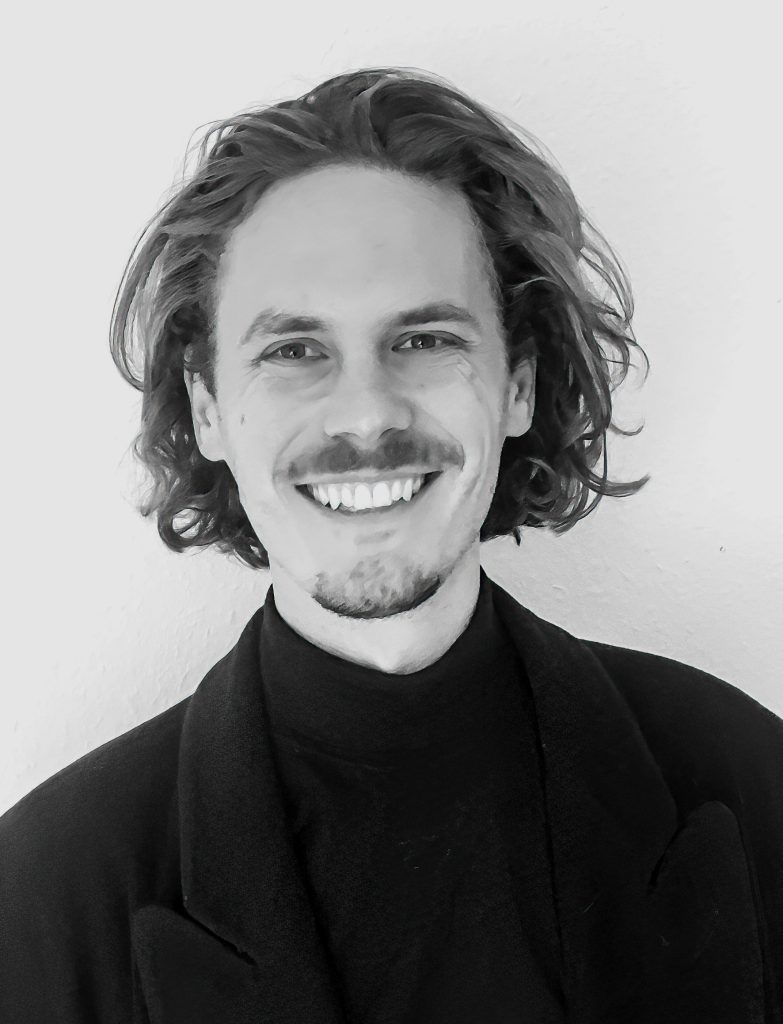
Marc Pfaff is a researcher and lecturer in the fields of design theory, media studies, and cultural studies. He studied Design at Köln International School of Design and the Hong Kong Polytechnic University School of Design. For his doctoral thesis recently submitted for review at the Academy of Media Arts Cologne (KHM), he investigated the ancient origins of designing (Ger. »Entwerfen«) as a cultural technique from a media theoretical perspective. Marc Pfaff currently works and teaches at Berlin University of the Arts and Technische Universität Berlin for the inter-university transdisciplinary M.A. program Design & Computation.
Line and Number: From the Operative Abstraction of Form to the In(ter)vention of Plan Drawings in Architectural Practices of Pre- and Early History
The earliest documented plan drawings of human history – small, inconspicuous floor plans of simple buildings on clay tablets, stone slabs, and papyruses – emerged with the urban and centrally governed civilizations of ancient Mesopotamia and Egypt that also developed the first writing systems. The talk aims at providing a reconstruction of their genesis and operative logic as an early architectural design medium. It does so by tracing some of the crucial reconfigurations of building practices and corresponding transformations, abstractions, and translations of architectural form since the Early Neolithic that gradually led to and rendered possible in the first place the intervention of such drawings in the processes of conceptualizing and collectively realizing built structures.
The earliest documented plan drawings of human history – small, inconspicuous floor plans of simple buildings on clay tablets, stone slabs, and papyruses – emerged with the urban and centrally governed civilizations of ancient Mesopotamia and Egypt that also developed the first writing systems. The talk aims at providing a reconstruction of their genesis and operative logic as an early architectural design medium. It does so by tracing some of the crucial reconfigurations of building practices and corresponding transformations, abstractions, and translations of architectural form since the Early Neolithic that gradually led to and rendered possible in the first place the intervention of such drawings in the processes of conceptualizing and collectively realizing built structures.
Christian
Driesen
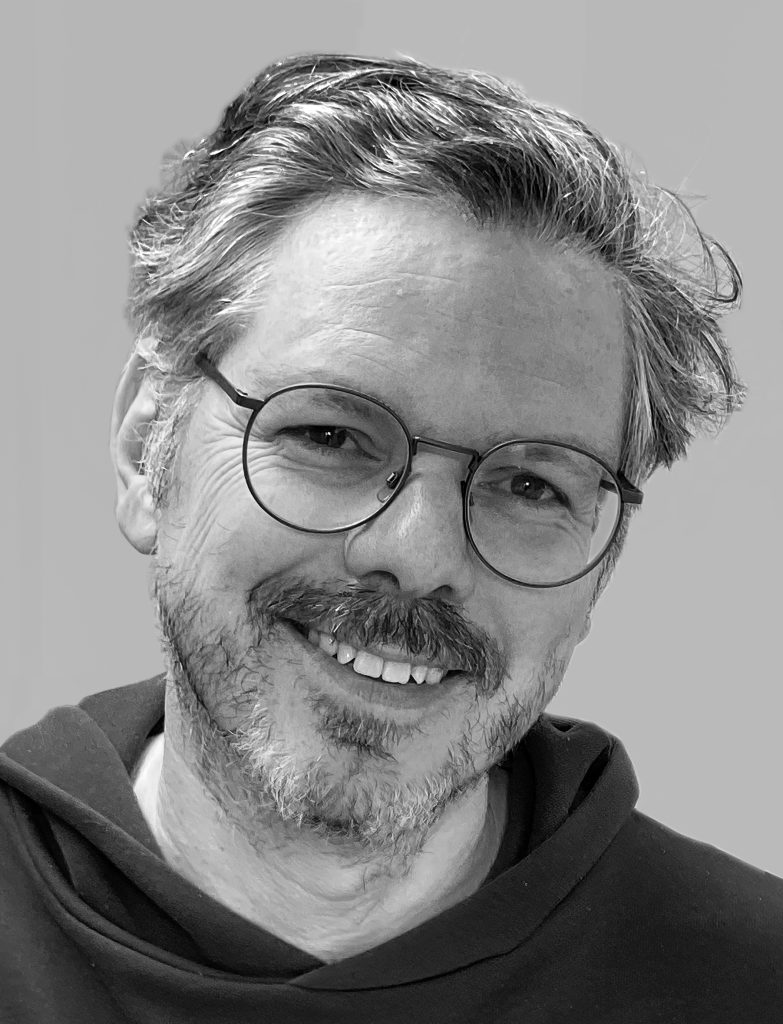
Christian Driesen was born in Erfurt in 1977. He studied philosophy and cultural studies in Leipzig, Nantes and Bordeaux and completed his doctorate in 2014 at the Free University of Berlin with the work »Theorie der Kritzelei« (Turia + Kant 2016). Since April 2024, he has been Professor of Transformation and Design at the Department of Design at Darmstadt University of Applied Sciences. He is currently primarily interested in the following topics: the relationship between formlessness and form; philosophy and translation; theory formation from a psychopathological perspective. His philosophical origins are post-structuralism, critical theory and phenomenology. Most recently he has worked as a translator, primarily of philosophical theory. Forthcoming translations include Monique Wittig, »Le corps lesbien« (1973) and Barbara Stiegler, »Nietzsche et la vie« (2021). His most recent publication is Félix Guattari, »Schizoanalytische Kartografien« (Merve 2023).
Disturbing Drawing: Doodling as Disfigurement
If drawing – in its experimental and designing emphasis – can be understood as a form of resistance, doodling can be understood as an enervating disruption of the figurative process of drawing. The formlessness of every doodle forms the punctum pruriens of all form formation. Not only does it incessantly break into it, disfiguring the beautiful form, but it always precedes it in its development. At the zero point of drawing we discover the doodle, less than something, but more than nothing: it resists nothingness on the one hand and form on the other, it is nothing but this graphic resistance. If we look at the development of graphic expression in the individual, drawing sublates doodling, figuration follows disfigurement, similarity follows dissimilarity, form follows formlessness. However, this kind of sublation also shows that the unruliness of doodling does not simply disappear in drawing, but haunts it like a phantom, constantly haunting and disturbing it. Psychoanalytically speaking, the doodle is the permanently recurring repressed of the drawing, it’s nonidentical. If doodling is already a notorious disfigurement at its beginning – the transformation of an absolutism of reality – then it is even more so at its end: in the drawing that cannot get rid of it. In my lecture, I would like to explore the assumption that the resistive potential of drawing – its being for difference in form – is based on the radical discontinuity of doodling – its being for indifference in formlessness. The fact that drawing figures is based on the fact that doodling disfigures.
If drawing – in its experimental and designing emphasis – can be understood as a form of resistance, doodling can be understood as an enervating disruption of the figurative process of drawing. The formlessness of every doodle forms the punctum pruriens of all form formation. Not only does it incessantly break into it, disfiguring the beautiful form, but it always precedes it in its development. At the zero point of drawing we discover the doodle, less than something, but more than nothing: it resists nothingness on the one hand and form on the other, it is nothing but this graphic resistance. If we look at the development of graphic expression in the individual, drawing sublates doodling, figuration follows disfigurement, similarity follows dissimilarity, form follows formlessness. However, this kind of sublation also shows that the unruliness of doodling does not simply disappear in drawing, but haunts it like a phantom, constantly haunting and disturbing it. Psychoanalytically speaking, the doodle is the permanently recurring repressed of the drawing, it’s nonidentical. If doodling is already a notorious disfigurement at its beginning – the transformation of an absolutism of reality – then it is even more so at its end: in the drawing that cannot get rid of it. In my lecture, I would like to explore the assumption that the resistive potential of drawing – its being for difference in form – is based on the radical discontinuity of doodling – its being for indifference in formlessness. The fact that drawing figures is based on the fact that doodling disfigures.
Lidia
Gasperoni
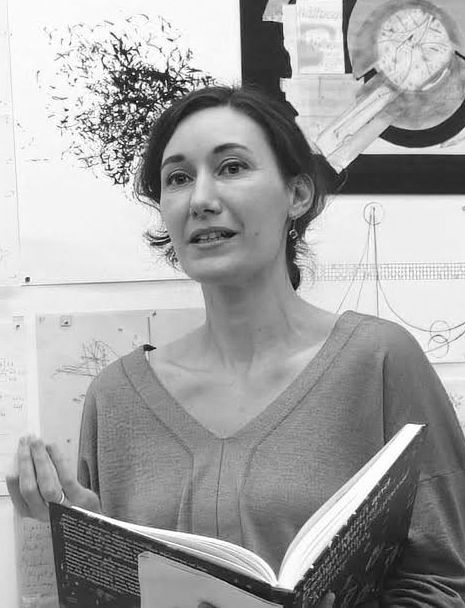
Lidia Gasperoni is a philosopher and architectural theorist. She is a postdoc research and teaching associate at the Department of Architectural Theory of TU Berlin since 2018. She studied philosophy in Rome, Freiburg im Breisgau, and Berlin. She obtained her PhD from the TU Berlin and an associate professor habilitation in Italy in the field of aesthetics. Her publications include: »Media Agency«, with Christophe Barlieb (transcript 2020); »Construction and Design Manual: Experimental Diagrams in Architecture« (DOM publishers 2022); and »Epistemic Artefacts: A Dialogical Reflection on Design Research in Architecture«, with Matthias Ballestrem (AADR 2023).
Instagram
Performing the Counter-Mapping as Intervening Drawing
In a collaborative dialogue, Diana Lucas-Drogan and Lidia Gasperoni will explore the performative value of counter-mapping employed as an intervening practice. Lidia Gasperoni, philosopher and architectural theorist, will introduce the concept of media agency as a theoretical paradigm to understand the generative value of media as aesthetic practices of materialization and externalization. In this perspective, the project »Haut von Hellersdorf« developed by Diana Lucas-Drogan is particularly significant inscribing the mapping on the fabric worn and performing it as a situated and participatory practice. The mapping becomes a body-space-material political intervention.
In a collaborative dialogue, Diana Lucas-Drogan and Lidia Gasperoni will explore the performative value of counter-mapping employed as an intervening practice. Lidia Gasperoni, philosopher and architectural theorist, will introduce the concept of media agency as a theoretical paradigm to understand the generative value of media as aesthetic practices of materialization and externalization. In this perspective, the project »Haut von Hellersdorf« developed by Diana Lucas-Drogan is particularly significant inscribing the mapping on the fabric worn and performing it as a situated and participatory practice. The mapping becomes a body-space-material political intervention.
Diana
Lucas-Drogan
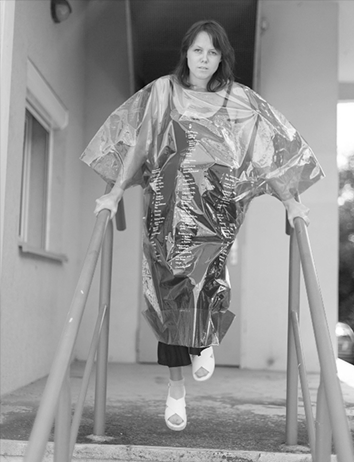
Diana Lucas-Drogan is a trained architect. Diana works on the intersection between critical education, art, feminist planning culture and curating. In the last years she worked in the public service and led the communal office for urban planning / economic development and building law in Waren (Müritz). In her academic career she taught at the TU Berlin in the master and bachelor program and was a longtime lecturer at the Chair of Prof. Dr. Tatjana Schneider at the TU Braunschweig. As a member of metroZones | Center for Urban Affairs she researches and produces urban discourse in various formats (publication, exhibition, public talks). In 2021 metroZones curated the exhibition »Mapping Along: Recording Margins of Conflicts« with an intense supplementary program at the Kunstraum Bethanien. Her textile mappings are exhibited at the nGbK – the neue Gesellschaft für bildende Kunst (New Society for Visual Art) / Art in the Underground (»Skin of Hellersdorf«), HKW – Haus der Kulturen der Welt (»Connecting spaces –digital, urban and trans-local relations and strategies«), Art Biennial GORKI (2. Berliner Herbstsalon »Berlin Field Recodings: Mappings Along the Refugee Complex«), HAU Hebbel am Ufer (»City as Byte«), Venice Architecture Bienniale 2021 (metroZones »We have nothing to lose but our supply chains«). She was the urban curator of »WERTstadt – Performative Urbanism«, Kunstverein Ludwigshafen.
dianalucasdrogan.com
dianalucasdrogan.com
Performing the Counter-Mapping as Intervening Drawing
In a collaborative dialogue, Diana Lucas-Drogan and Lidia Gasperoni will explore the performative value of counter-mapping employed as an intervening practice. Lidia Gasperoni, philosopher and architectural theorist, will introduce the concept of media agency as a theoretical paradigm to understand the generative value of media as aesthetic practices of materialization and externalization. In this perspective, the project »Haut von Hellersdorf« developed by Diana Lucas-Drogan is particularly significant inscribing the mapping on the fabric worn and performing it as a situated and participatory practice. The mapping becomes a body-space-material political intervention.
In a collaborative dialogue, Diana Lucas-Drogan and Lidia Gasperoni will explore the performative value of counter-mapping employed as an intervening practice. Lidia Gasperoni, philosopher and architectural theorist, will introduce the concept of media agency as a theoretical paradigm to understand the generative value of media as aesthetic practices of materialization and externalization. In this perspective, the project »Haut von Hellersdorf« developed by Diana Lucas-Drogan is particularly significant inscribing the mapping on the fabric worn and performing it as a situated and participatory practice. The mapping becomes a body-space-material political intervention.
Drawing as Objection I & II
Jason
Men
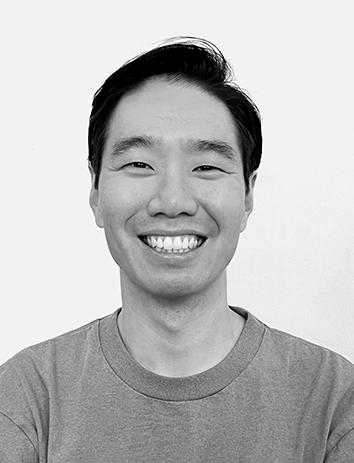
Jason Men is the chair of the panel »Drawing as Objection« on Friday, 7 June 2024, 5:30–7:00 pm and Saturday, 8 June 2024, 9:30–10:30 am.
Jason studied at the Architectural Association in London (AA Diploma ARB/RIBA 2016). For his final year thesis, he investigated the 2015 forest fires in Indonesia, which caused a transnational carbon cloud harming countless fauna and people. He further analysed this issue as a researcher at Forensic Architecture Working closely with Indonesian NGOs and lawyers, they developed reports and animations using GIS data, satellite imageries and drone footages, which became visual evidence for public fora, exhibitions and tribunals. As a UK-registered architect, he worked at various architectural practices, such as WOHA Architects in Singapore, Resi Design and Open Systems Lab in London. He served as a guest critic for second year architecture students at the University of Westminster. Recently, he was a lecturer for the Methods Lab in the MA Integrated Design Research Program at the Köln International School of Design of TH Köln.
Jason studied at the Architectural Association in London (AA Diploma ARB/RIBA 2016). For his final year thesis, he investigated the 2015 forest fires in Indonesia, which caused a transnational carbon cloud harming countless fauna and people. He further analysed this issue as a researcher at Forensic Architecture Working closely with Indonesian NGOs and lawyers, they developed reports and animations using GIS data, satellite imageries and drone footages, which became visual evidence for public fora, exhibitions and tribunals. As a UK-registered architect, he worked at various architectural practices, such as WOHA Architects in Singapore, Resi Design and Open Systems Lab in London. He served as a guest critic for second year architecture students at the University of Westminster. Recently, he was a lecturer for the Methods Lab in the MA Integrated Design Research Program at the Köln International School of Design of TH Köln.
Mbaye
Diop
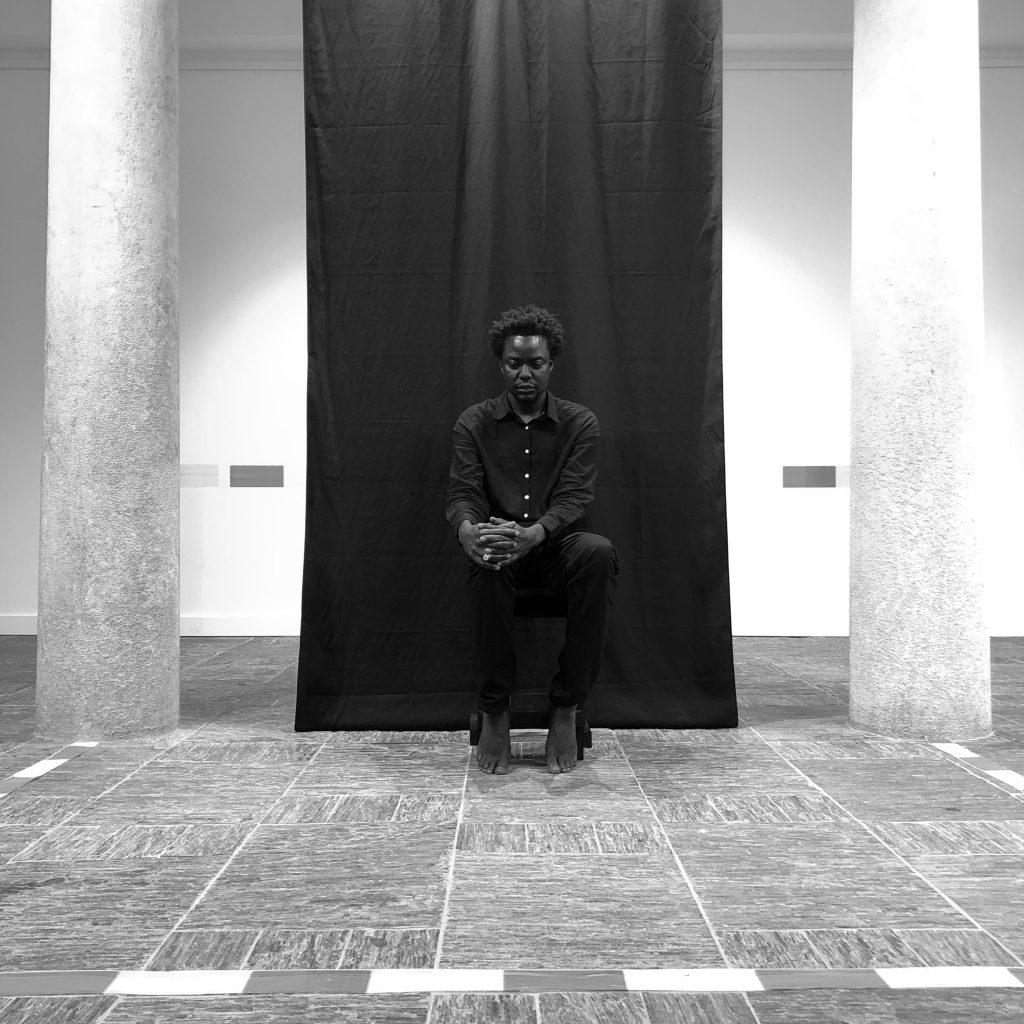
Mbaye Diop is a visual artist and performer from Senegal. After studying at the Dakar School of Arts (2006-2010), he taught art in secondary schools from 2010 to 2019 while continuing his artistic practice. Seven years after his studies, the artist began to present his work more visibly through a series of exhibitions in Saint-Louis (Waaw Gallery, Institut Français…), Dakar (Blaise Senghor Cultural Center…) and then in Europe, more specifically in Switzerland (in Geneva at the Skopia Gallery, in Nyon and at La Becque in La Tour-de-Peilz…). Mbaye Diop’s work is essentially based on black and white reproductions of images from his daily life in Senegal. He creates large-format murals and uses screen printing as a means of artistic expression on various supports (cardboard, wood, wall, etc.), as well as video and performance.
mbayediop.com
Instagram
mbayediop.com
Drawing: From the Numerical to the Material, From the Material to the Numerical
Walking through the streets of Dakar (the capital of Senegal), the images on the walls accompany you on your way to your destination. Traces of scenes from everyday life populate our gaze as we observe, admire and question them. These drawings are left by artists or other people who want to express themselves with coal collected on the sidewalks. For some years now, my artistic work has been strongly focused on scenes of life, a retranscription of people strolling through markets, cultural or political events. These scenes are usually drawn or painted in black and white, which purifies them, simplifies them, or makes them more abstract. The result is a universal status that defies ethnic or continental stereotypes. From mural painting and drawing I move to performance art, and through drawing I create an animated movement, a life in which I dictate the rhythm to be followed. This work goes through different stages, starting from real filmed or photographed images, combining digital technology with the manipulation of preformed, painted or drawn matter.
Walking through the streets of Dakar (the capital of Senegal), the images on the walls accompany you on your way to your destination. Traces of scenes from everyday life populate our gaze as we observe, admire and question them. These drawings are left by artists or other people who want to express themselves with coal collected on the sidewalks. For some years now, my artistic work has been strongly focused on scenes of life, a retranscription of people strolling through markets, cultural or political events. These scenes are usually drawn or painted in black and white, which purifies them, simplifies them, or makes them more abstract. The result is a universal status that defies ethnic or continental stereotypes. From mural painting and drawing I move to performance art, and through drawing I create an animated movement, a life in which I dictate the rhythm to be followed. This work goes through different stages, starting from real filmed or photographed images, combining digital technology with the manipulation of preformed, painted or drawn matter.
Simon
Meienberg
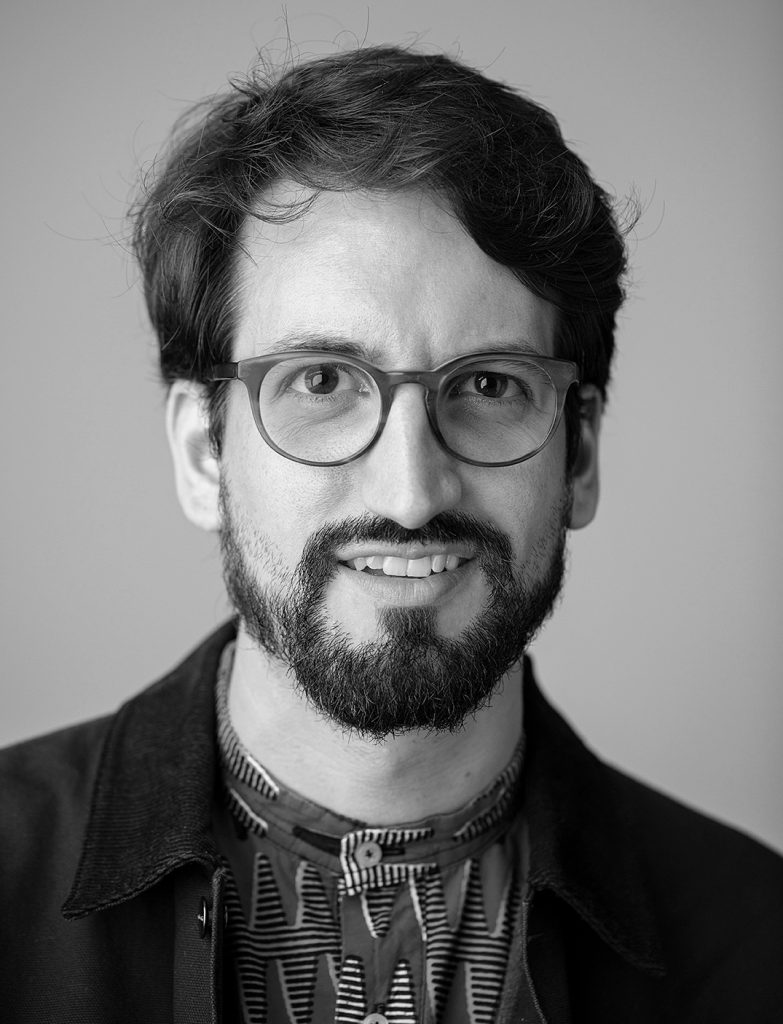
Simon Meienberg will simultaneously translate Mbaye Diop’s presentation into English on Friday, 7 June 2024, 5:30–7:00 pm.
Simon graduated with a Master of European Studies in Design at KISD – Köln International School of Design, having studied for two years at Politecnico di Milano and ENSCI – Les Ateliers in Paris. In his master’s thesis Making Home, he was researching the practices of home-making and appropriation of space by migrant communities in the urban and socio-political networks of Paris and Cologne. With his doctoral research Borderlands – Migrant Spacing between Autonomy and Control (working title) in the DFG-funded Research Training Group »connecting – excluding: Cultural Dynamics Beyond Globalized Networks«, he aims to contribute to a profound epistemic knowledge about migrant’s space production and its operative potential and diverse formulations amidst decolonial power struggles.
simon-meienberg.com
Instagram
simon-meienberg.com
Larissa
Fassler

For the past 18 years, Larissa Fassler has been creating works of art that document and interrogate the geo-spatial politics of city life. Through cartographic paintings, drawings, and architectural sculptures, she visualises both the observable and intangible characteristics of a city, delving into the complex socioeconomic and cultural issues affecting urban spaces today.
Photo: Dale Grant
larissafassler.com
Instagram
Photo: Dale Grant
larissafassler.com
Building Worlds
In her talk, Larissa Fassler will discuss her use of mapping and counter-mapping processes, along with her employment of subjective systems to survey public spaces. Fassler meticulously walks through urban spaces, recording her corporeal experiences and dedicating hundreds of hours to collecting detailed onsite observations, alongside archival and online research. Her work invites viewers to contemplate urban space from various perspectives, forming an ongoing project that scrutinises cities and our interactions with them with a critical eye and a meticulous sense of observation.
Photo: Dale Grant
In her talk, Larissa Fassler will discuss her use of mapping and counter-mapping processes, along with her employment of subjective systems to survey public spaces. Fassler meticulously walks through urban spaces, recording her corporeal experiences and dedicating hundreds of hours to collecting detailed onsite observations, alongside archival and online research. Her work invites viewers to contemplate urban space from various perspectives, forming an ongoing project that scrutinises cities and our interactions with them with a critical eye and a meticulous sense of observation.
Photo: Dale Grant
Canan
Akoglu

Canan Akoglu works as Associate Professor at the Lab for Social Design and as Head of Design for People Master’s Programme at Design School Kolding in Denmark. She has a background in architecture together with a PhD degree in industrial design from Istanbul Technical University, Turkey. Her main research and teaching experience cover creative ways of engaging with stakeholders, service design, critical design, co-design, and social design in health, care and wellbeing that contribute to fostering agency and citizenship in everyday life. Two of the recent research projects that Akoglu works in are on healthcare innovation, 4D Picture Project, funded by Horizon EU, led by ERASMUS MC and Leiden University and on youth ‘s wellbeing & community building around cultural events in the southern region of Denmark, funded by Region South. Akoglu’s work has been published in journal such as CoDesign, Design Issues and Design for Health. Prior to her current position, Akoglu worked as the co-founder of the Department of Industrial Design at Ozyegin University in Istanbul.
From Sketching to Prototyping: The Power of Collective Creativity
A key aspect of designerly research methods is their reliance on creative acts of making. Sketching and prototyping together embody the power of collective creativity, blending diverse perspectives to produce innovative solutions. These collaborative activities, fundamental in design, harness the strengths of a group, fostering an environment where ideas can flourish and evolve dynamically. During the last two decades, the role of making in the design process has expanded significantly by adopting new forms and involving a broader range of participants. In this study sketching and prototyping collectively are taken as two forms of making. This involves designers creating tools and participants using these tools to draw and/or create expressive artifacts, and discussing these creations, as well as co-designers creating and evaluating prototypes in iterative cycles. In this context, making is not merely a act for producing or finalising design. Instead, it is a creative process that involves performing, constructing and transforming meaning through the contributions of all involved parties across these various activities; they are often used for opening up for deeper conversations and discussions among the participants. When multiple individuals contribute to making together with designers, a rich tapestry of perspectives emerges, often sparking new insights. This collective effort transcends the limitations of individual thinking, merging different perspectives and approaches into a cohesive vision. This study explores the landscape of design practice by looking into the role of making with a temporal focus and the intention that the designer has in different foci areas.
A key aspect of designerly research methods is their reliance on creative acts of making. Sketching and prototyping together embody the power of collective creativity, blending diverse perspectives to produce innovative solutions. These collaborative activities, fundamental in design, harness the strengths of a group, fostering an environment where ideas can flourish and evolve dynamically. During the last two decades, the role of making in the design process has expanded significantly by adopting new forms and involving a broader range of participants. In this study sketching and prototyping collectively are taken as two forms of making. This involves designers creating tools and participants using these tools to draw and/or create expressive artifacts, and discussing these creations, as well as co-designers creating and evaluating prototypes in iterative cycles. In this context, making is not merely a act for producing or finalising design. Instead, it is a creative process that involves performing, constructing and transforming meaning through the contributions of all involved parties across these various activities; they are often used for opening up for deeper conversations and discussions among the participants. When multiple individuals contribute to making together with designers, a rich tapestry of perspectives emerges, often sparking new insights. This collective effort transcends the limitations of individual thinking, merging different perspectives and approaches into a cohesive vision. This study explores the landscape of design practice by looking into the role of making with a temporal focus and the intention that the designer has in different foci areas.
Björn
Kühn

Björn Kühn is an artist and lecturer in art for students of architecture and urban planning at the Brandenburgische Technische Universität Cottbus-Senftenberg. He studied art at the State Academy of Fine Arts Stuttgart, the University of Barcelona, and he was a member of the Independent Study Program PEI at the Museum for Contemporary Art Barcelona MACBA. He publishes useful literature made by artists through Verlag für Handbücher (Publishing House for Handbooks), which he cofounded and he creates sculptural and performative workflows for exibitions and stagings. His dissertation under the name of »Technoid Realism« discusses the aesthetic and political implications of the technical drawing.
verlagfuerhandbuecher.de
verlagfuerhandbuecher.de
Technoid Realism
The technical drawing is not just the engineer’s answer to the problem of imagination, but also the market’s answer to the problem of language. The technoid equivalent to the holy spirit, although not in the sense of the pentecost polyglots, but an image to replace the word. If the babylonians already had worked according to the norms for construction drawing, technical product documentation and geometrical product specification god’s petty confusion of language would have had no effect on the tower whatsoever, as a communication about the construction according to DIN EN ISO doesn’t need any additional mediation, given that the technical drawing has been drawn correctly. The standards organizations of the world have known this for a long time. The key word is clarity or rather unambiguity: The technical drawing is monosemantic because it is monotheistic. This unambiguity is then through the diachronic inertia of language mixed up with our sense-certainty. As Marx credits the commodity with abounding metaphysical subtleties and theological niceties, maybe these are not only found on the side of the fetish, where perception and interaction with the commodity create an entangled aesthetic knot, but can also be found even before anything has been produced within a powerful fantasy of unambiguity. The technical drawing asserts not only that it can be translated completely into language, but also into matter. Its influence is coextensive with the continued, ever farther reaching accumulation of capital, whose aesthetic (and epistemic) foundations it co-lays. As such the technical drawing is not a rare semiotic occurence, which would foster something like a false consciousness, but should be examined as the historical materialist condition of the possibility of the sign, understood as a relation between signifier and signified. Thereafter, the sign needs to be redrawn, its own imagery must take a step and the ontological aftereffects must be worked through.
The technical drawing is not just the engineer’s answer to the problem of imagination, but also the market’s answer to the problem of language. The technoid equivalent to the holy spirit, although not in the sense of the pentecost polyglots, but an image to replace the word. If the babylonians already had worked according to the norms for construction drawing, technical product documentation and geometrical product specification god’s petty confusion of language would have had no effect on the tower whatsoever, as a communication about the construction according to DIN EN ISO doesn’t need any additional mediation, given that the technical drawing has been drawn correctly. The standards organizations of the world have known this for a long time. The key word is clarity or rather unambiguity: The technical drawing is monosemantic because it is monotheistic. This unambiguity is then through the diachronic inertia of language mixed up with our sense-certainty. As Marx credits the commodity with abounding metaphysical subtleties and theological niceties, maybe these are not only found on the side of the fetish, where perception and interaction with the commodity create an entangled aesthetic knot, but can also be found even before anything has been produced within a powerful fantasy of unambiguity. The technical drawing asserts not only that it can be translated completely into language, but also into matter. Its influence is coextensive with the continued, ever farther reaching accumulation of capital, whose aesthetic (and epistemic) foundations it co-lays. As such the technical drawing is not a rare semiotic occurence, which would foster something like a false consciousness, but should be examined as the historical materialist condition of the possibility of the sign, understood as a relation between signifier and signified. Thereafter, the sign needs to be redrawn, its own imagery must take a step and the ontological aftereffects must be worked through.
Carolin
Höfler
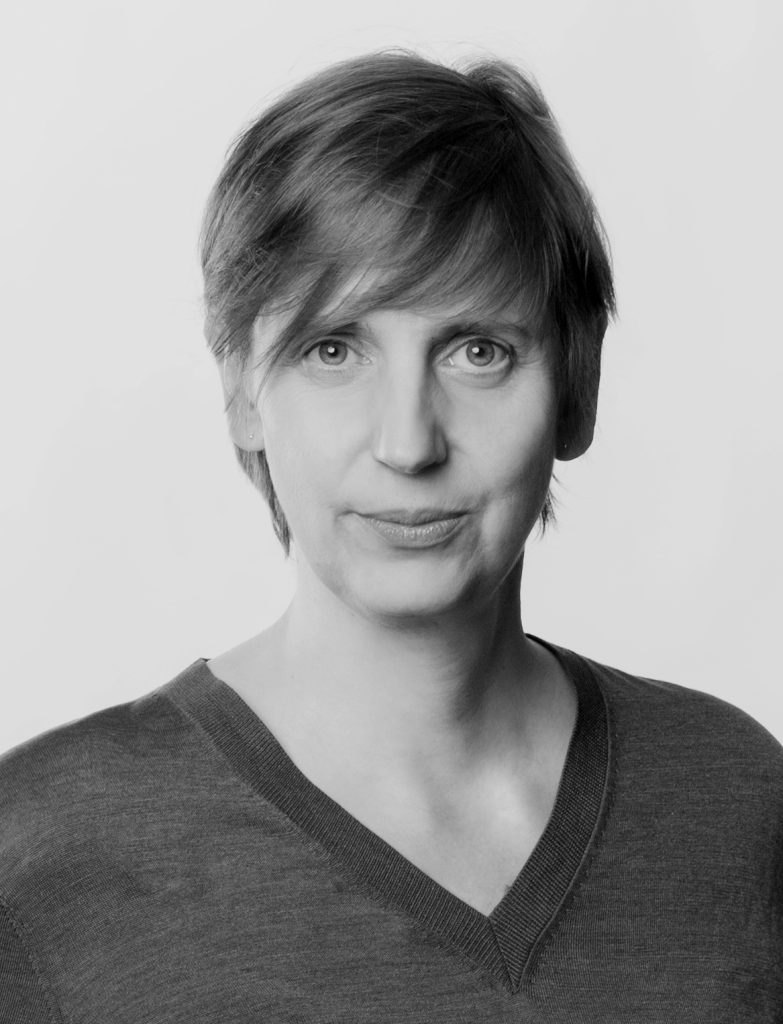
Carolin Höfler studied art history, modern and contemporary German literature, and theatre (master’s degree) as well as architecture (Diplom degree) at the universities in Cologne, Vienna, and Berlin (FU and TU Berlin). She wrote her dissertation on the history and theory of computational design at Humboldt-Universität zu Berlin, earning her doctorate there in 2011. Höfler has been a professor of design theory and research at TH Köln, University of Applied Sciences, Faculty of Cultural Sciences, since 2013. She is a founding member of the German Research Foundation (DFG) Research Training Group »connecting – excluding: Cultural Dynamics Beyond Globalized Networks«, a cooperative initiative among the University of Cologne, Academy of Media Arts Cologne, and TH Köln. Her research relates to processes of design and creation and material systems in architecture and design, forms of medial spatiality and ephemeral urbanization, and investigative methods and artistic practices of spatial analysis. Her research on education often centers on diagrammatic use of drawings in experimental processes of design and creation in which the idea of controlled loss of control, which at first glance seems to be contradiction in terms, plays a central role. Her most recent publications are (with Philipp Reinfeld), »Mit weit geschlossenen Augen. Virtuelle Realitäten entwerfen«, Paderborn: Brill | Fink 2022, and (with Johanna Mehl), »Attending [to] Futures. Matters of Politics in Design Education, Research, Practice«, Hamburg: adocs 2023.
kisd.de
carolinhoefler.de
anschliessennausschliessen.de
kisd.de
carolinhoefler.de
anschliessennausschliessen.de
Gesa
Foken
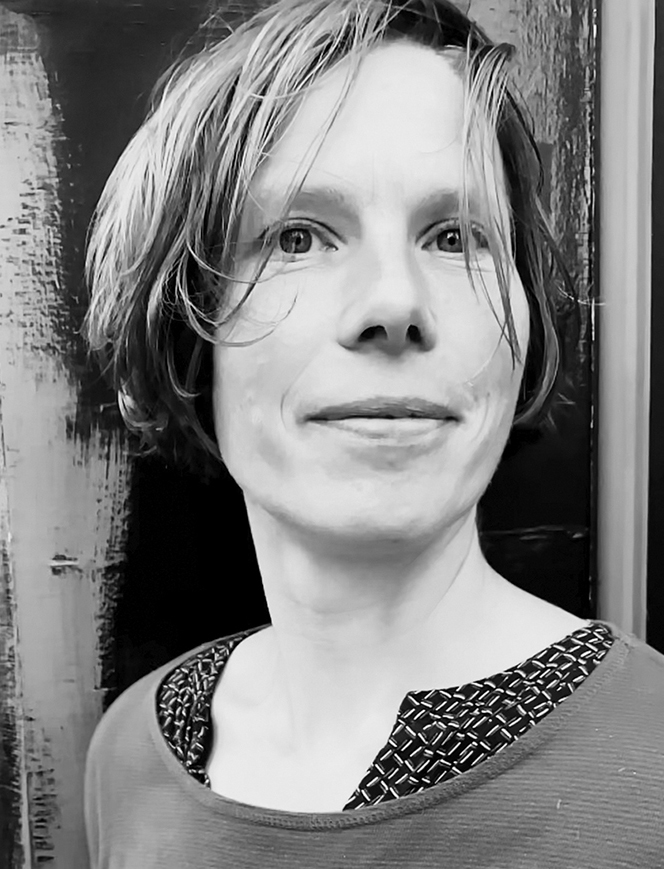
Gesa Foken works primarily in the medium of drawing as a visual artist and studies the theory of drawing as a major part of her work as a philosopher and cultural theorist. For example, her artistic works »Stadtrest« (2005), »Der leere Platz«/»Cargosammlung« (2010), »Erbschaft« (2017), and »Arbeit(s)zeichen« (long-term study starting in 2018) are manifestations of her interest in the social tensions that emerge in urban settings and places of industrial production. Her dissertation in philosophical aesthetics, »Offenheitszwang. Kritik der Offenheitsästhetik vor dem Hintergrund zeitgenössischer Zeichnung« (LIT 2017), focuses on a practice of drawing that is reminiscent of the monotony of industrialized work and, in its programmatic approach, also reflects the process-bound nature of the present-day social imperative toward flexibilization. She has spoken and published extensively since then; the current area of focus in her research is titled »Zeichnung nach dem Algorithmus. Zur Delegation der Formbildung« and brings together the theory of drawing in art, design, and architecture / theory of creation and distillation of form and of imparting knowledge / theories of digitalization against the backdrop of social theory. Her teaching practice since 2014 has been just as multifaceted as her artistic and scholarly pursuits and is additionally based on intensive practice of non-academic cultural education from 2007 through 2012. She has been appointed to the role of professor of education and research in the arts and design at Hochschule Darmstadt, University of Applied Sciences (Faculty of Design) in 2023.
h-da.de
foken-gesa.de
h-da.de
foken-gesa.de